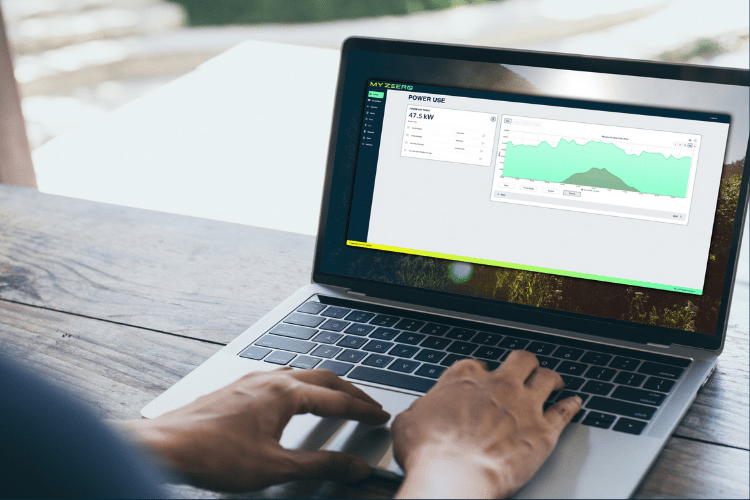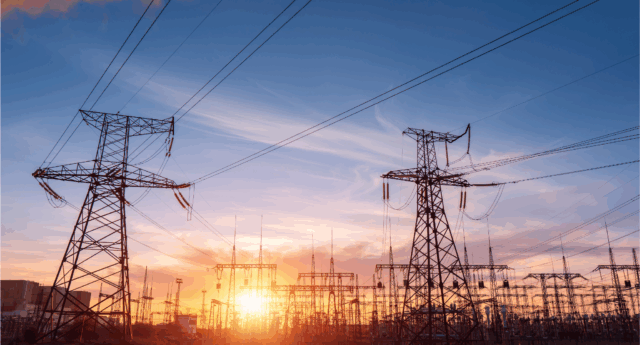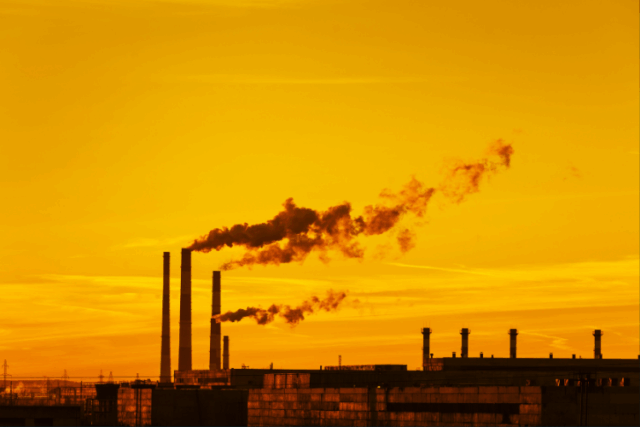A guide to forecasting energy costs and consumption
Energy cost forecasting is no longer a luxury — it’s a necessity. For businesses in today’s volatile energy markets, predicting future costs and consumption can mean the difference between controlled budgets and spiralling expenses. But what exactly is energy forecasting, and how can your organisation use it to take charge of your energy strategy?

What is Energy Forecasting?
Energy forecasting is the process of predicting future energy consumption and costs using historical data, market trends and external factors like weather or operational changes. By estimating how much energy your business will use and what it will cost, energy forecasting helps you budget accurately, secure better contract rates and avoid unexpected price spikes. Accurate forecasting is essential for businesses to plan strategically, reduce financial risks and support sustainability initiatives.
Why businesses need energy forecasting
Energy is one of the largest overheads for many businesses. Yet, prices can fluctuate dramatically due to factors outside your control — from global energy markets and political instability to extreme weather events. Without a reliable way to predict your energy costs, it’s easy to end up overpaying or being unprepared for price spikes.
Planning ahead
Energy forecasting helps you plan ahead, improve your negotiating power when securing contracts and avoid unpleasant budget surprises. For example, businesses that can accurately forecast their energy usage can bulk-buy energy at favourable rates or time procurement when prices are low, potentially saving thousands annually.
Supporting sustainability
A clear energy cost forecast also supports sustainability strategies by helping you anticipate how different efficiency initiatives or operational changes will affect future consumption and emissions.
Common energy forecasting methods and models
Energy forecasting isn’t a one-size-fits-all exercise. The best approach depends on your business model, data availability and the complexity of your energy needs. Here are some of the most common methods used:
Time series forecasting
This method uses historical energy consumption data to predict future usage. Techniques like moving averages or exponential smoothing can help identify patterns and seasonal trends.
Regression models
Regression analysis considers external variables that impact energy demand, such as temperature, production schedules, or occupancy rates. This approach is particularly useful for businesses where external factors strongly influence consumption.
Machine learning and AI
AI-powered forecasting models, including neural networks, support vector machines, or random forests, can analyse vast datasets and uncover complex, non-linear relationships. These models often improve accuracy but require more data and technical expertise.
Hybrid models
Many businesses combine methods to increase accuracy, for example by integrating time series analysis with regression or machine learning algorithms.
How energy forecasting supports strategy
A strong energy forecasting capability doesn’t just help with budgeting — it fundamentally strengthens your energy strategy.
- Procurement timing: Forecasts inform when to renew or renegotiate contracts, letting you buy energy when market conditions are favourable.
- Operational planning: By anticipating peaks in consumption, you can adjust production schedules or shift high-energy tasks to off-peak times.
- Investment decisions: Forecasts highlight where inefficiencies exist and help build business cases for energy-saving technologies.
- Sustainability planning: Energy forecasting supports carbon reduction strategies by predicting future emissions, helping businesses set achievable targets.
Once you have a clear energy cost forecast, the next logical step is to ensure your bills align with what you planned for, by conducting a utility bill audit to catch any overcharges.
What is energy price forecasting?
Energy price forecasting looks beyond your own usage and focuses on predicting market prices for electricity, gas and other fuels. These forecasts take into account:
- Commodity prices: Global oil, gas, and coal markets.
- Policy changes: New tariffs, carbon taxes, or subsidies.
- Weather patterns: Seasonal variations or long-term climate trends.
- Grid factors: Demand-supply balance, maintenance outages, or infrastructure upgrades.
Combining price forecasts with consumption forecasts gives businesses a complete view of their future energy exposure, enabling better risk management.
Features of energy forecasting tools and software
Manually building forecasts with spreadsheets can quickly become unmanageable. Fortunately, modern energy forecasting software makes it easier to generate accurate predictions, update forecasts in real-time, and share insights across teams.
Features of effective energy forecasting tools include:
- Automated data collection: Pulls data directly from meters, sensors and building management systems.
- Scenario modelling: Allows businesses to compare different future scenarios, such as the impact of new equipment or production changes.
- Integration with procurement: Aligns forecasts with market prices and contract management to inform purchasing strategies.
- Visual dashboards: Transform complex datasets into clear, actionable insights.
Investing in the right forecasting software reduces manual effort, improves accuracy and frees up time to focus on strategic decisions.
AI and advanced energy forecasting techniques
Traditional forecasting methods have limitations, especially when business operations or energy markets become highly dynamic. That’s where AI and advanced analytics come in.
AI-driven models can:
- Learn from new data in real time, adapting forecasts as patterns change.
- Analyse thousands of variables simultaneously, capturing complex relationships missed by simpler models.
- Reduce forecasting error rates, saving money and avoiding budget surprises.
As technology advances, expect forecasting tools to become more accessible and user-friendly, enabling even small businesses to benefit from cutting-edge predictive capabilities.
Challenges in energy forecasting
While energy forecasting offers clear benefits, it’s not without challenges:
- Data quality: Incomplete or inaccurate energy consumption forecasting data reduces reliability.
- Changing business conditions: Sudden shifts in operations — like adding a new production line — can render existing forecasts obsolete.
- Market volatility: External factors like geopolitical events or extreme weather can disrupt even the best predictions.
- Technical expertise: Building and maintaining forecasting models often requires specialised skills.
Addressing these challenges starts with good data management practices, regular forecast updates and seeking expert support when needed.
How accurate forecasting reduces costs
Businesses that proactively forecast energy costs often see tangible bottom-line benefits:
- Lower energy prices: By anticipating needs, you can buy at the best times.
- Avoided penalties: Accurate forecasts reduce the risk of exceeding contracted volumes or peak demand thresholds.
- Reduced waste: Spotting consumption anomalies early prevents waste and unnecessary costs
- These savings not only improve profit margins but can also fund further efficiency initiatives, creating a positive feedback loop.
Best practices for energy forecasting
To get the most out of your forecasting efforts, consider these best practices:
- Use high-quality data: Regularly calibrate meters and check for missing or inconsistent data points.
- Update regularly: Forecasts should be dynamic documents updated with new data, not static reports created once a year.
- Combine energy consumption and price forecasting: Integrating both gives a complete view of future energy exposure.
- Involve multiple stakeholders: Finance, operations, and sustainability teams should collaborate to align forecasts with broader business goals.
- Benchmark forecasts: Compare past forecasts against actual outcomes to improve accuracy over time.
Conclusion
Energy forecasting gives businesses the insight needed to plan, control costs, and make informed energy decisions. By understanding and anticipating both energy consumption and market prices, you can reduce financial risk, improve competitiveness and better support sustainability targets.
But forecasting is only the first step — once you know what you should be paying, you’ll need to make sure you’re not overpaying. That’s where a thorough utility bill audit comes in, helping to validate your forecasts against what you’re actually being charged.
-

Market Insights
Big Changes Ahead: TNUoS Charges from April 2026
From April 2026, the way businesses are charged for using the electricity transmission network will change significantly. These charges, known as Transmission Network Use of…
Find out more -

Business update
Birmingham Museums Trust Partners with Equity Energies
New contract delivers £182k savings and boosts sustainability efforts across the city’s leading cultural sites.
Find out more -

Business update
Carbon emission monitoring systems: How do they work?
For companies striving to meet regulatory requirements, sustainability goals, and Net Zero targets, a robust carbon emission monitoring system is no longer optional,it’s essential.
Find out more